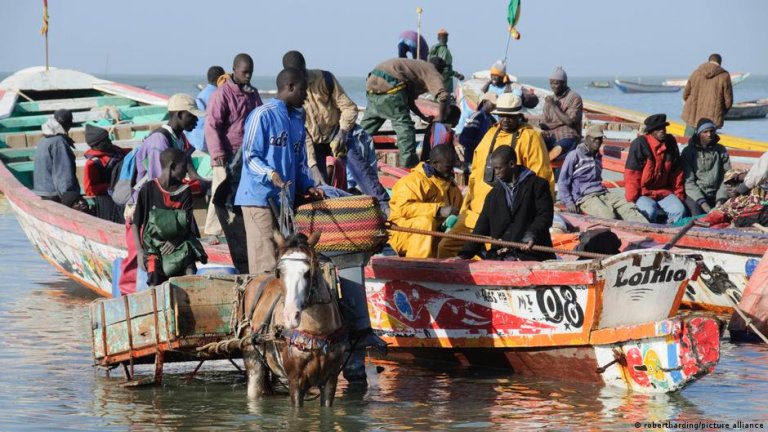In 2015, Europe witnessed a significant increase in the influx of migrants, commonly referred to as the “2015 EU refugee crisis.” This article explores how this “crisis” transformed the migration-development agendas. With a specific focus on IOM’s information campaign in Senegal, I argue that the EU’s post-crisis migration policy has been characterised by the securitisation and externalisation of borders, reinforcing a pre-existing development agenda that primarily serves the political interests of EU states. What makes Senegal’s information campaign noteworthy is its use of affective, emotional, and relatable content to discourage Senegalese people from embarking on “irregular” journeys, rather than resorting to explicit violence such as highly militarised border controls. Although 2015 may sound like a long time ago, this type of affective borderwork represents a new form of border enforcement that has been increasing in recent years and thus merits attention.
Crisis, Securitisation, and the Externalisation of Borders
The term “crisis” connotes a break from the usual state of affairs, a threat to a pre-existing order, which, in turn, assumes that a phenomenon is the antithesis to the status quo, the “normal”. Crucially, what is perceived as normality naturalises existing power relations, in which only certain populations have the authority to declare a crisis. As a result, the self-declared language of crisis serves to consolidate political power and reinforce the pre-existing political agenda.
This asymmetrical power dynamic underpins the representation of the“2015 EU refugee crisis”. In this case, the language of “crisis” evokes a threat to the pre-existing order in EU political bodies– such as the principle of national sovereignty and territorial integrity– which are perceived as directly threatened by the influx of migrants.
This concern has driven the securitisation and externalisation of borders. Securitisation involves implementing measures such as erecting walls, intensifying surveillance with military equipment at borders, and enhancing sea surveillance. Externalisation refers to the outsourcing of EU border practices beyond its territorial limits to third countries, aiming to prevent the inflow of “irregular” migrants.
Calculative Process in Migration-Development Agenda
The securitisation and externalisation of borders in the aftermath of the “crisis” has resulted in further limiting the scope of the migration-development agenda . Prior to the crisis, discussions around the migration-development nexus were characterised by what Raghuram (2009) termed a “calculative process”, where some forms of relationships between migration and development become visible, while other forms are rendered invisible by governments, international funding organisations, and research institutes.
The relationship between migration and development has frequently been explored in binary terms of optimistic views and pessimistic views. On the one hand, migration-development functionalist optimists, including proponents of push-pull theories and the new economics of labour migration theories, argue that migration can enhance economic development in migrants’ origin countries through remittances and serve as a risk-aversion strategy for economic crises. On the other hand, the structural-historical pessimistic perspective about migration and development contends that migration can have a negative effect on economic development by causing a brain drain or reinforcing economic dependency between richer and poorer countries.
Additionally, the capability and aspiration model sought to demonstrate that development could increase migration aspirations, leading to higher emigration rates.
However, these perspectives have been criticised for promoting problematic assumptions, including economic-centred discussion, a lack of subaltern perspectives, the use of binary and deterministic terminologies, and the perpetuation of colonial relations. These assumptions have led to a calculative process, thus neglecting other forms of migration-development relationships.
The discursive emergence of the “crisis” has accelerated and exacerbated this calculative process, aligning with the increasing policy strategy to securitise and externalise borders. The relationship between migration and development is now constrained within the judgement of whether it primarily serves the political interests of EU member states, aimed at excluding African migrants from their territories as undesirable subjects.
In other words, the crisis and subsequent border regimes have suspended a consideration of other possible forms of migration-development relationships, focusing instead on whether migration poses a threat to sovereignty and territorial integrity.
Humanitarian Justification
EU member states have justified prioritising border securitization over exploring alternative migration-development strategies by invoking the alleged emergence of a crisis and employing humanitarian language as a response. Initially, securitisation and humanitarian protection appeared contradictory, as humanitarianism was traditionally understood as an altruistic act aimed at providing life-saving relief . It was antithetical to the tightening and externalisation of borders, the construction of walls, and the increased surveillance of populations. In times of crisis, however, securitisation has been viewed as a way to protect lives by deterring migrants from crossing borders and seas in the first place. Thus, in the name of humanitarian protection for migrants, securitisation and externalisation of borders have been legitimised as means to achieve this protection. Consequently, the language of crisis has facilitated the entanglement of securitisation and humanitarianism.
Case Study : “Migrants as Messengers” Campaign by IOM
This shift in the migration-development agenda and the humanitarian justification behind it can be observed in the “Migrants as Messangesrs(MaM)project”, which was implemented by the IOM in Senegal and funded by EU member states and the EU itself. It aims to deter “irregular” migration to Europe by highlighting the precarity of migratory journeys through documentary screenings, dancing performances and talks by returnees. The underlying assumption was that individuals engage in “irregular” migration due to a lack of migration-related knowledge and would stop moving out of their community if well-informed about the potential danger of migratory journeys.
This case study highlights two important points: (i) how the security-related interests of EU member states overshadow other possible relationships between migration and development, and (ii) how such practices are justified using humanitarian logics.
- Reinforcing Calculative Process
One of the common responses among Senegalese migrants was that they asked IOM staff for alternative migration pathways and alternative livelihood opportunities during the campaign. Another common response was that they insisted on resorting to “irregular” migration.
These responses highlight how the one-sided attitude of the IOM and its funding member states are undergirded by the “calculative process” fallacy. They neglect the transformative and essential role migration plays in sustaining Senegalese livelihoods. Their rejection of migration as a fundamental self-sustaining strategy, without presenting alternative opportunities, reflects how the developmental agenda of this IOM project is shaped solely by the political interests of EU member states, without empirically evaluating whether “irregular” migration can contribute to the socioeconomic development of the local Senegalese community.
When Raghuram (2009) coined the term “calculative process,” it was in response to the problematic privileging of a model within the migration-development agenda that emphasised the enhancement of familial local economies through labour migration. However, even this model has come under scrutiny and has been reduced to the assertion that only a sedentary lifestyle leads to development for Senegalese people.
- The Justification by Humanitarian Logic
Moreover, it is important to note that this narrowed development project has been justified by deploying humanitarian discourse. In this case, humanitarian language is manifested by emphasising the precarity of “irregular” migration among local communities and the alleged concern of EU member states for Senegalese lives. For example, one of the key components of this project is a dancing performance in front of local people, where dancers enact interpretations of migrants’ despair at sea. Similarly, the project includes documentary screenings that integrate experiences with returnees, emphasising their hardships en route to Europe. By utilising relatable contents and appealing to their emotional aspects, IOM attempted to dissuade people from embarking on migratory journeys, as Vammen (2021) called “affective borderwork”.
Such project design and messaging, a priori justifies migrant intervention, by invoking the notion of the IOM’s responsibility to protect. Put differently, the perceived crisis evoked by tragic events en route further necessitates the protection of vulnerable people, which can be a good justification for this form of containment policy, even though it does not take into account their future livelihoods. Simply put, the tragedy is used as a deterrent: “Look at this tragedy. To safeguard your life, you need to stay here.”
Conclusion
To analyse how the “2015 EU refugee crisis” has transformed the migration-development agenda, we must pay attention to the following two key dimensions.
Firstly, the securitisation and externalisation of borders, induced by the “crisis”, only seeks to dissuade would-be migrants from starting their journey. However, this border regime neglects to explore alternative relationships between migration and development. For example, the campaign in Senegal focuses solely on deterring individuals from leaving their community and family without adequately presenting alternative opportunities. This is nothing less than the development paradigm shaped by the interests of EU member states, failing to evaluate the potential relationship between emigration and development within the Senegalese community.
Secondly, the portrayal of tragic events as “crises” reinforces externalising practices that confine African people to their countries of origin under the guise of humanitarianism. For instance, the Senegal information campaign frames itself as a life-saving endeavour from perilous “irregular” migration, thus legitimising interventions that disregard migrants’ aspirations and perspectives on development and livelihood.
Note: This article reflects the views of the author and not the position of the DPIR or the University of Oxford.







